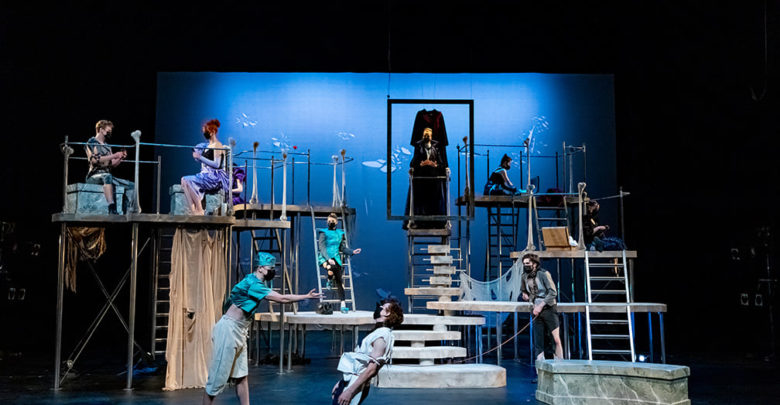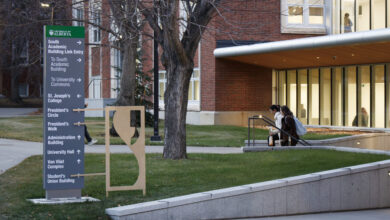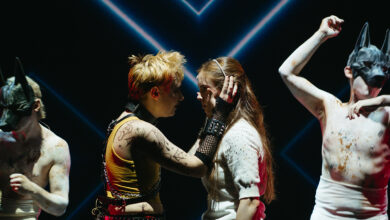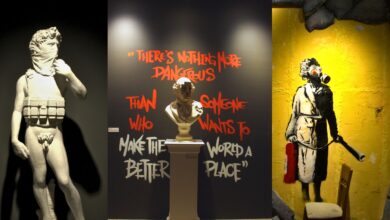Theatre Review: Mac Wellman’s ’Dracula‘
Mac Wellman's retold Dracula displays a talented cast and beautiful costumes, though it falls flat in its tension.
 Supplied
SuppliedVampires in entertainment are nothing new, from the 1990’s Buffy, to 2008’s Twilight, to more modern What We Do in the Shadows, and one of my personal favourites, the 2008-2014 masterpiece, True Blood. While Dracula doesn’t hold the title of the first vamp story, it is an excellent example of the archetypal vampire, a standard that so many more vampires are held to.
The set of Mac Wellman’s Dracula retelling perfectly captured the gothic revival vibes of Bram Stoker’s Dracula and each actor did wonderfully. The massive femur bones integrated into the scaffolding of the set immediately tells audiences what to expect from Dracula.
Seward’s (Thomas Kassian) monologues were captivating, and the dynamics between Jonathan Harker (Max Hanic) and Van Helsing (Lauren Brady) were amazingly effective moments of comedic relief. Quincy’s (Zachary Strom) American aloofness was perfectly captured by Strom, just as Seward’s clear disdain for Lucy’s fiancé was. The love between Lucy (Elizabeth Chamberlain) and Mina (Sophie Healy) was so present, I could feel it radiating from each actress from my seat.
For the majority of the play, most of the actors remained on stage, just separate from the action. It was yet another lovely touch. Lucy and Quincy flirt and play cards in the corner of the stage. Count Dracula exuded a powerful presence underneath the scaffolding of props. Both events fit their characters. Harker’s insanity was effective, especially in comparison with Harker’s beginning — perfectly tame accompanied by the excellent posh British accent, not lost to his insanity.
However, the star of the show was the costume design by Robert Shannon. Each costume was stunning, and I’ll be having dreams of Lucy’s dress for the next week. The female Count Dracula (Julia Van Dam) in the most classically masculine clothes, subtly altered for a more feminine fit, all tucked underneath a heavy, floor-length cape? Stunning.
I’d also like to highlight Mina’s and Lucy’s costumes. Each girl wore a purple dress with a pouf on one shoulder, a single sleeve on opposing arms, corset, and layered skirts. Matching the colour of the two girls’ dresses creates an instantaneous connection between the girls. However, while they share the colour, everything else about the dresses are complete opposites. While Lucy’s pouf was on the right, Mina’s was on the left. Where Mina’s dress was slit on the left side, Lucy’s slit on the right. Thus, the dresses offer very different characterizations. Mina is committed to Harker, while Lucy receives multiple proposals.
I also enjoyed the writing, especially Dracula being portrayed as female and the use of comedy in what’s usually a dark subject. While the majority of the play was fantastic, there are still some glaring issues in this play, namely, the lack of tension throughout the play.
The second half of the play relied heavily on noise to elicit reactions from the audience, just as horror movies utilize jump scares when they can’t figure out a real way to make their plot scary. For example, at several points in the second half, the characters resorted to just screaming, notably after Lucy’s death. Lucy’s death is followed by (what feels like) several minutes of the characters repeatedly screaming “Lucy’s dead, we’re sad.” Not even going into the age-old writing advice of “show, don’t tell,” Lucy’s death should’ve been captivating enough to the audience that yelling for attention shouldn’t have been necessary.
This misuse of tension only continues into the end of the play, where Lucy is seemingly revived by Mina after being staked by Steward, and then Count Dracula just walks away. Rather than just complaining, I’ll offer my two cents on how I’d have fixed this ending. One, kill off Dracula. Have the big fight scene and give the audience the satisfaction of seeing the big bad guy (or gal, in this production) killed off. Alternatively, this play also has Dracula kill Quincy by just holding her hand towards him. If Dracula is now this crazy, overpowered individual who obviously cares little for human life, have him kill off the rest of the good guys. Add some stakes — forgive the pun — and kill someone off! Anyone!
In integrating sexuality into the story of Dracula, perhaps the utilization of vampirism is an allegory for the repression of sexuality by Victorian society, specifically for women. For example, the flower petals falling around Lucy and Mina after they’re turned into vampires could represent their “deflowering,” for lack of a better term. The social isolation from their newfound vampirism could also reflect the treatment of sexually active women in this era. Dracula also lacks representation of many other forms of sexuality, specifically gay and asexual relationships.
Thus, if you’re craving a little Dracula, I recommend watching the 1992 film, Bram Stoker’s Dracula, featuring Gary Oldman, Keanu Reaves, and Winona Ryder (to name a few). It’s available on Canadian Netflix. This adaptation delves into the incredibly engaging relationship between Mina and Count Dracula. Or, if you’re into reading the struggles of women with sexuality around this time period, try 1798’s Maria: Or, the Wrongs of Woman by Mary Wollstonecraft.
More than anything, I highly recommend catching whatever projects this talented group takes part in next.
For more information about the play and the cast, read here.




